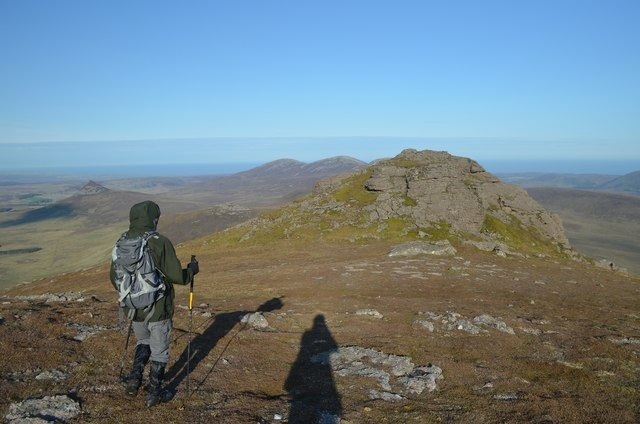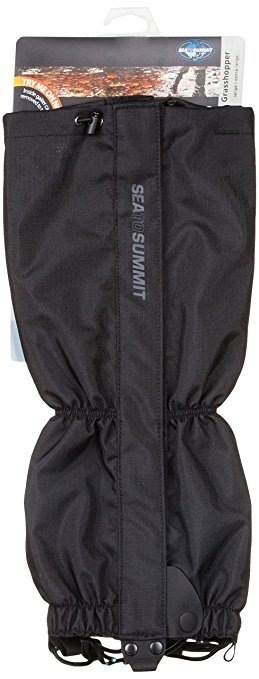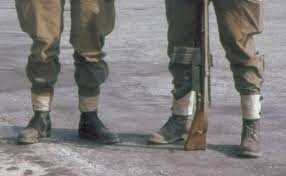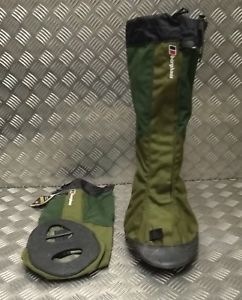In Praise of the humble Gaiter


This is a short piece about a small, regularly overlooked item of equipment that could make a big difference to your enjoyment of a day on the hills. It will certainly make a difference to the life and utility of your waterproof boots.
The items in question are the gaiters that cover your lower legs and the tops of your boots. Not to be confused with Gators. If the latter are covering your lower legs then you have way too many problems to count.

The problem with keeping walking boots waterproof is that they have somehow, to be usable by human beings and human beings are a damn nuisance. We want to easily put our irregularly shaped feet into our boots and so we end up with a great big hole in the top which is the ideal entry point for feet but also for water, snow, grit, pebbles and muck. Water in any form softens and chills the feet and makes the inside of your boots smellier than they have to be. Stones, dirt and grit inside a boot are uncomfortable and will grind holes in the waterproof lining pretty quickly thus shortening their effective life.

Short of permanently bonding our feet into our shoes we need a way to cover this hole so that the debris of the day doesn’t pour in.
Gaiters are the highly effective, low tech and low cost solution.
History
Gaiters are short fabric sleeves that cover as much of the boot upper as possible and extend up toward the knee. They strap or tie under the instep of the boot, zip up at the front and tighten around the top to stop them sliding down as the day progresses. They were developed in concept from Puttees. These were strips of wool or cotton which were wrapped around boots and wound up the leg. The purpose was the same; to keep unwanted matter out of boots. They were popularised by the British army in India and later became a normal part of any WW1 soldier’s trench survival kit. Outside of the military, gaiters were normal accoutrements for horse riding to prevent rubbing against stirrup leathers and it was for this purpose that they became popular amongst travelling clergy who were expected to journey around the parish or diocese on horseback.

Modern gaiters
Modern mountain gaiters have moved away from absorbent fabrics and leather and are now manufactured in polyester or nylon. The weight of fabric varies and sometimes a heavy duty but stiff material is used on the lower section to improve abrasion resistance while a lighter, more comfortable fabric is used around the leg section.
It is now possible to get all manner of specialist gaiters for different activities. Adventure racers and mountain runners can get light, breathable and elastic versions to fit over running shoes for trail and mountain running. I have personally used a couple of these styles and have found them to be pretty rubbish at keeping stuff out of my shoes and quite expensive for the poor job they do.

At the other end of things there is the Yeti series of gaiters from Berghaus. These and other “Supergaiters” have a rubber rand that covers the entire boot and wraps around under the sole. They lock out everything and keep the boot upper in excellent condition. I used these on my leather Telemark boots every winter for about twelve years and found them vastly superior on snow to anything else I had used. However. . . and there is always a “However”, there are a couple of drawbacks. The initial cost is anything from 90 to 150 Euro per pair and if they are not being used predominantly on snow the rubber rand around the boot will wear badly and break down quite quickly. Replacing the rand is £30 Sterling and the sterling part is relevant because no Irish company does this work so they will have to be sent to the UK for repair, so including the carriage, that means the cost of repair can be more than half the original purchase price. The other drawback is that they are an absolute bugger to put on in the first place. There are youtube videos showing how to fit them without destroying your fingers and some shops charge a fee if you don't want to have a crack at it yourself. Great on snow though.

Rainpants
In wet weather when you are using both gaiters and rainpants make sure that your rainpants go outside, over the top of your gaiters. Tucking the leg of your rainpants into your gaiters just funnels all the water directly down to your toes. It is important to remember that rain trousers are not in any way a substitute for gaiters. Rainpants exist to stop your backside and legs from getting wet while the purpose of gaiters is to keep stuff, including water, out of your boots. Gaiters won’t completely seal your boots if you are wading across a stream but on several occasions I have been quick enough on my feet to get away with dashing through slightly deeper water and staying dry.
There are times though, when even the best gaiters will be unable to help. As these guys have discovered.


As ever if you have suggestions for future pieces or any comment then get in touch with me; neil@charlescamping.ie .
This is one of many articles covering outdoorsy subjects and they can all be found here on the Charles Camping website. http://www.charlescamping.ie/store/blog
Thanks for reading.

M��{���
""""""""""
Articles from Neil Smith
View blog
The clock is ticking down to the end of polling in the Shropshire North by-election in England and t ...

The staff accommodation was small and busy. The three-room apartment would have been perfect for a s ...

I’m drinking an Americano while I wait for my daughter’s ballet class to end. As I sit and sip on th ...
Related professionals
You may be interested in these jobs
-
Project Manager
Found in: Talent IE 2A C2 - 1 day ago
Talent Curve Tipperary, IrelandTalent Curve are recruiting for a Project Manager to work for a reputable civil engineering contractor operating across the UK and Ireland. They are currently recuiting for a project they have coming up in Tipperary. Experience managing groundsworks/housing projects would be adva ...
-
Site Agent
Found in: Talent IE C2 - 1 day ago
BAM Civil Dublin Airport, Ireland PermanentBuilding a sustainable tomorrow · BAM Civil are looking for a Site Agent to join our team in the Leinster Area · Your mission · Design review of submissions for earthworks, pavement, road furniture, markings and finishings to ensure it complies with the contract requirements · Pr ...
-
Principal Cloud Software Engineer
Found in: Talent IE C2 - 2 days ago
Autodesk Dublin, Ireland Full timePosition Overview · Do you thrive in an environment where you can work on engaging and challenging projects? · Every year, Autodesk hires talented engineers to join our global teams and benefit from unlimited access to our technology and industry mentors. If this sounds like yo ...




Comments
Pascal Derrien
6 years ago #4
Neil Smith
6 years ago #3
All the cool stuff has already been done. I wanted to write about anti-gravity backpacks or quantum wellies but just because they don't exist I have to write about useful, sensible things. 😄 Woe is me.
Neil Smith
6 years ago #2
Pascal Derrien
6 years ago #1